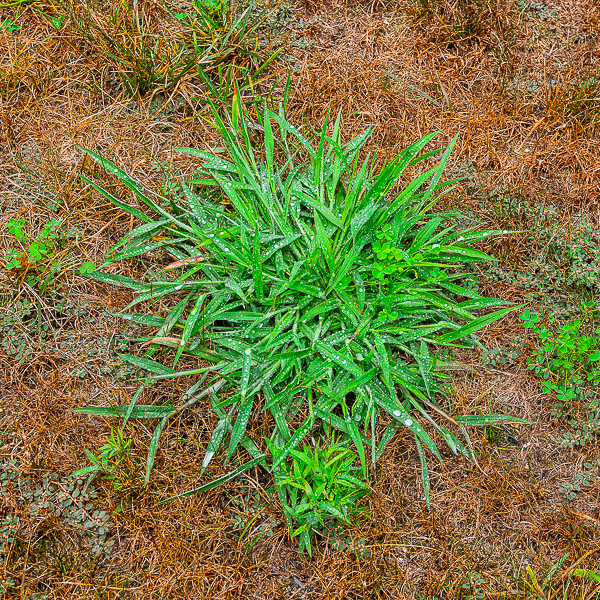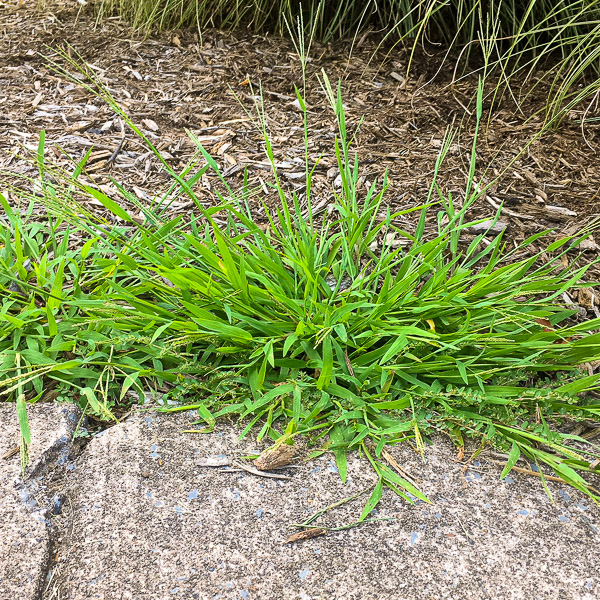How it Works: Preen Garden Weed Preventers
Here's how our Garden Weed Preventers prevent weeds before they even sprout rather than killing them after they’ve already had the chance to grow.
Crabgrass is usually considered a weed problem in the lawn, where it can overtake and snuff out turfgrass with its fast-creeping mats but this common grassy weed also can seed into bare soil in any sunny area, making it an unwanted invader in garden beds as well as lawns.
Crabgrass is such a widespread, versatile weed because of its prolific seeding power. A single plant, if left to mature, is capable of producing 100,000 or more seeds per year. That’s a lot of future weeds if even a fraction of them sprout.
One saving grace is that crabgrass is an annual weed, meaning it dies off at the end of each season, then depends on dropped seeds sprouting anew the following spring or early summer.
That habit gives gardeners an option to control crabgrass by preventing its seed from germinating – an option that isn’t available for weeds such as dandelions, thistle, and plantain that come back year after year from their own roots.
If you don’t mind the work, one effective way to control crabgrass growth in gardens is to simply pull the weeds as you see them. Since crabgrass sprouts from seeds each season, the roots are shallow and come up easily, especially in damp soil following rain.
Young crabgrass can also be spot-sprayed with a non-selective or “kill-everything” herbicide… so long as you don’t let the spray drift onto nearby plant foliage. Either way, the key is eliminating crabgrass before they’ve had a chance to seed and build up the seed bank for next year.
A third option is to prevent crabgrass from growing in the first place by treating beds with a spring application of a granular weed-preventer.

Maudib / iStock / via Getty Images
Preen Garden Weed Preventer prevents crabgrass and dozens of other weeds for up to 12 weeks by scattering it over the soil or mulch around existing plants, including flowers, roses, herbs, groundcovers, shrubs, ornamental grasses, trees, and listed vegetables. It’s best applied in early spring as forsythia bushes are in peak bloom.
Preen Extended Control Weed Preventer prevents crabgrass and more than 125 other weeds for up to six months in ornamental gardens. (It’s not for use in edible gardens.) It’s best applied in mid-spring between the time forsythia bushes have finished blooming and the first dandelion flowers are opening.
Both can also be reapplied in fall to head off winter-annual weeds.
Preen Natural Vegetable Garden Weed Preventer is specially formulated for use in vegetable gardens and can be applied monthly during the growing season.
Dealing with crabgrass on the lawn is a little more difficult.
For one thing, most herbicides can’t be used to kill crabgrass plants without also harming turfgrass. The two types of plants are too similar, and so only a few specialized products can kill crabgrass plants without killing most turfgrass species… and even then only when crabgrass plants are young.
Pulling crabgrass on the lawn is doable but can be difficult when the infestation is more than a few plants.
Granular crabgrass preventers are usually the most effective and practical approach in lawns, especially when the lawn is thin (i.e. a lot of open spaces between the grass blades) and when crabgrass has become an annual problem.
Early spring – before crabgrass germinates – is when crabgrass preventers are most effective. Good cues are when buds on the earliest landscape plants start to open and when forsythia shrubs reach peak bloom.
